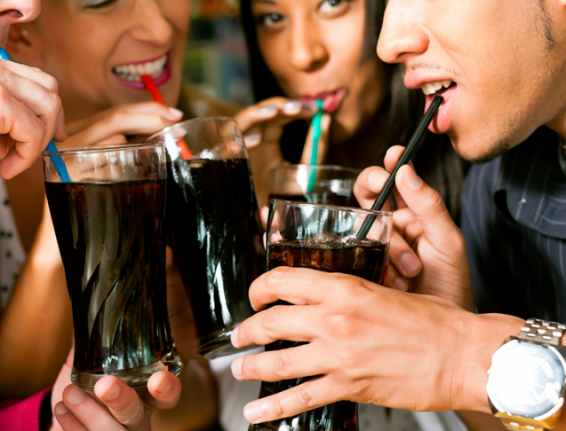Sipping a soft drink is much more harmful for your teeth than gulping it, Phd student Olga Ilie found.
When you are in a bar enjoying a soft drink, don’t talk with friends, but drink as fast as you can.
This may not be the best thing for your social life, but for your teeth it certainly is. This is one of the things Olga Ilie of the faculty of Applied Sciences discovered. Next month she will defend her thesis ‘Numerical studies of dental plaque and caries formation’.
By tossing your drink down the hatch you will limit the time interval in which your teeth are exposed to a low pH and thereby limit tooth enamel demineralisation. Logic as this may seem, good models describing all the processes that lead to caries formation – and that could also explain the differences between social drinking and gulping – were lacking.
“Studies describing different aspects of caries formation have been around for about twenty years, but our models take on a much more holistic approach”, says Ilie, who elaborated on a numerical study performed almost ten years ago by her promoters Dr. Cristian Picioreanu and Prof. Mark van Loosdrecht.
When consuming sweets you are feeding the bacteria from the dental plaque on your teeth. These microorganisms convert glucose into organic acids, chiefly lactic acid which is produced when there is an abundance of glucose inside the mouth. The acidic pH creates favourable conditions for tooth enamel demineralisation.
But this is just the simple explanation. Ilie: “The new study integrates state of the art knowledge on biofilm processes (such as mass transfer, microbial composition, microbial conversions and substrate availability) with tooth demineralisation and remineralisation kinetics using faster and more rigorous numerical methods.”
Ilie hopes that her mathematical models can help surmount problems that have been haunting dental researchers for a long time. Studying caries formation in real life is complicated because of the long time span it takes for carious lesions to develop. The conditions present in the mouth – acid attacks during eating and drinking (resulting in demineralisation) interposed with fasting periods (with the potential of remineralisation) – are difficult to imitate and analyse experimentally.



Comments are closed.